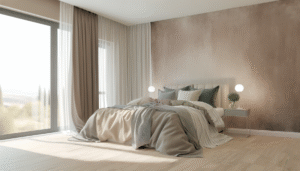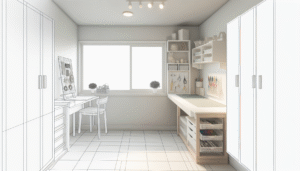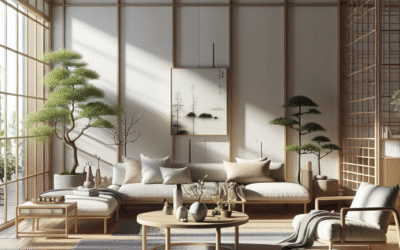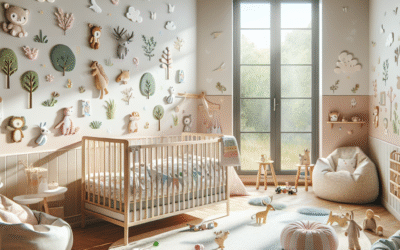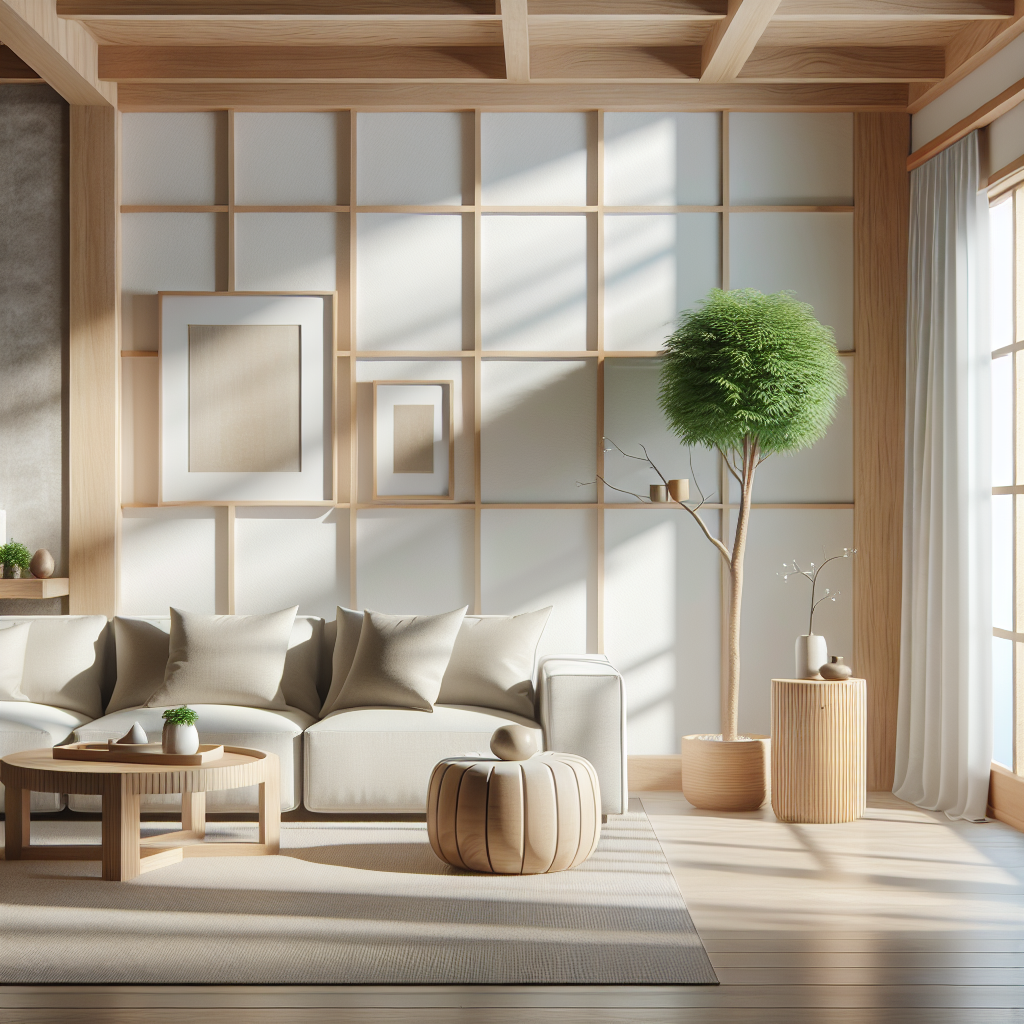
Are you tired of cluttered spaces that don’t reflect your calming self? You’re not alone. Many people yearn for a sanctuary that embodies peace and minimalism. Enter Japandi style—a harmonious blend of Japanese minimalism and Scandinavian functionality. In this article, we delve into the top Japandi minimalist décor trends that not only uplift your living spaces but also encourage mindfulness and tranquility.
By reading this article, you will discover actionable insights into Japandi design elements, practical tips for implementation, and the emotional benefits of a minimalist approach to decor. Let’s embark on this journey towards an elegant and tranquil home.
Below, we will cover:
- Understanding Japandi Style
- Key Features of Japandi Décor
- Color Palettes and Materials
- Furniture Trends in Japandi Style
- Plants and Natural Elements
- Textiles that Enhance the Aesthetic
- Case Studies and Real-life Examples
Understanding Japandi Style
Japandi is more than just a decorating style; it represents a philosophy of living. Merging Japanese sophistication with Scandinavian ingenuity, it emphasizes simplicity, functionality, and harmony.
Roots of Japandi
The term “Japandi” itself is derived from two distinct cultures. Japanese design advocates for simplicity and the use of natural materials, while Scandinavian design focuses on comfort and practicality. Together, they create an aesthetic that feels both warm and welcoming.
Key Features of Japandi Décor
Hindi aesthetics highlight several distinct characteristics that define Japandi style.
Simplicity in Design
Every piece in Japandi décor serves a purpose. This means decluttering your space and focusing on items that bring joy and utility.
Natural Materials
Using materials such as wood, stone, and bamboo not only embodies the beauty of nature but also supports a sustainable living approach. For example, reclaimed wood furniture not only tells a story but minimizes environmental impact.
Color Palettes and Materials
The color palette in Japandi designs typically leans towards neutral tones, which contribute to a serene atmosphere.
Neutral Tones
Colors like beige, gray, and muted earth tones create a calming backdrop that invites relaxation. Adding accents of darker colors like charcoal or navy can introduce depth without overwhelming the senses.
Textures and Layers
Incorporating various textures—like a soft woolen throw over a sleek linen sofa—adds layers and warmth to your minimalist space.
Furniture Trends in Japandi Style
家具 is key to achieving a true Japandi aesthetic.
Multi-functional Pieces
Look for furniture that serves multiple purposes. A coffee table with storage, for example, completely aligns with the minimalist ethos.
Low-profile Designs
Low-slung sofas and tables promote a sense of spaciousness. They are visually appealing and offer a more relaxed atmosphere, reminiscent of Japanese tea rooms.
Plants and Natural Elements
Integrating nature into your décor can improve your mood and air quality.
Indoor Plants
Plants like bonsai trees or succulents fit beautifully within Japandi décor. They bring life into your home while remaining low-maintenance.
Textiles that Enhance the Aesthetic
Textiles soften the austere look of minimalist designs.
Natural Fabrics
Choose textiles made from natural fibers such as cotton, linen, or wool. A handwoven throw can add warmth and comfort to a space without compromising on minimalism.
Case Studies and Real-life Examples
Let’s explore a few real-life applications of the Japandi style.
Case Study: A Small Apartment
In a recent renovation of a compact urban apartment, the owner embraced Japandi principles by opting for furniture with hidden storage. The overall color scheme consisted of calming earth tones, creating a sense of spaciousness.
Case Study: A Family Home
In a family home, the integration of plants not only added beauty but also contributed to an educational aspect for the children, promoting responsibility as they learned to care for the greenery.
Making It Work for You
Now that you’re inspired, let’s outline the practical steps to incorporate Japandi style into your space.
Declutter First
Begin by removing unnecessary items. Follow the “one in, one out” rule to guard against future clutter.
Plan Your Color Palette
Select your color palette ahead of time to ensure cohesiveness throughout your space.
Invest in Quality Pieces
Choose timeless, high-quality furniture that adheres to the principles of minimalism.
Curate a Plant Collection
Start small with a few indoor plants. Over time, expand your collection based on your maintenance comfort level.
Add Textures
Incorporate various textures through throws, cushions, and rugs to keep spaces warm and inviting.
Conclusion & Next Steps
By embracing the principles of Japandi minimalism, you not only create a visually stunning space but also a functional sanctuary that reflects tranquility. Remember to focus on natural materials, thoughtful functionality, and a neutral color palette. As you embark on this transformation, consider developing a vision board to visually map out your ideas.
We hope this guide has inspired you! For more décor tips, visit our related content on minimalist living and sustainable design practices.
Content Disclaimer
The information provided in this article is for educational purposes only. Consult with design professionals for tailored advice.
Categories
- Accent Walls & Ceilings (61)
- Art Curation & Gallery (62)
- Bedding Style Trends (68)
- Bedroom Makeover (81)
- Bohemian & Eclectic Styles (58)
- DIY & Budget-Friendly Decor (64)
- Eco-Friendly Design (62)
- Furniture Care (71)
- Home Decor & Design Ideas (162)
- Home Wellness Spaces (59)
- Integrated Outdoor Living (67)
- Japandi Style (61)
- Kids and Nursery Decor (59)
- Living Room Decor (79)
- Mix & Match Techniques (73)
- Modern & Contemporary Design (66)
- Rug Sizing & Placement (73)
- Scandinavian Design Inspiration (20)
- Seasonal Home Decor (79)
- Small Space Solutions (73)
- Wall Art & Painting Tips (77)
Recent Comments
Archives
Product Gallery
-
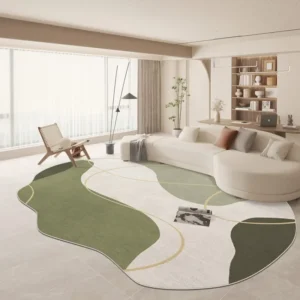 Large Area Green Rugs for Bedroom Nordic Living Room Decoration Shaped Carpet Irregular Plush Lounge Rug Home Thick Washable Mat
Rated 5.00 out of 5$54.94 – $346.41Price range: $54.94 through $346.41
Large Area Green Rugs for Bedroom Nordic Living Room Decoration Shaped Carpet Irregular Plush Lounge Rug Home Thick Washable Mat
Rated 5.00 out of 5$54.94 – $346.41Price range: $54.94 through $346.41 -
 Nordic Style Rugs for Bedroom Morandi Living Room Decoration Carpet Large Area Geometry Lounge Rug Home Cloakroom Non-slip Mat
Rated 5.00 out of 5$39.46 – $597.66Price range: $39.46 through $597.66
Nordic Style Rugs for Bedroom Morandi Living Room Decoration Carpet Large Area Geometry Lounge Rug Home Cloakroom Non-slip Mat
Rated 5.00 out of 5$39.46 – $597.66Price range: $39.46 through $597.66 -
 Irregular Shapes Living Room Decoration Carpet Modern Style Rugs for Bedroom Home Thicken Plush Rug Fluffy Soft Lounge Floor Mat
Rated 4.83 out of 5$55.84 – $347.37Price range: $55.84 through $347.37
Irregular Shapes Living Room Decoration Carpet Modern Style Rugs for Bedroom Home Thicken Plush Rug Fluffy Soft Lounge Floor Mat
Rated 4.83 out of 5$55.84 – $347.37Price range: $55.84 through $347.37


